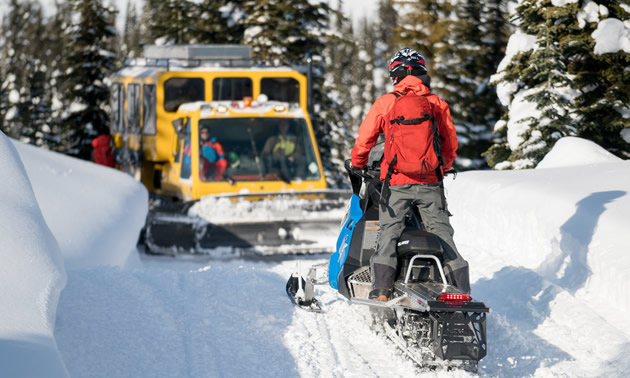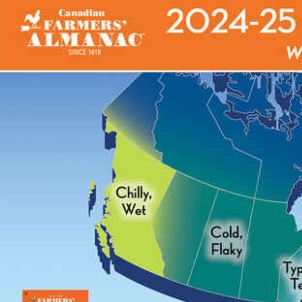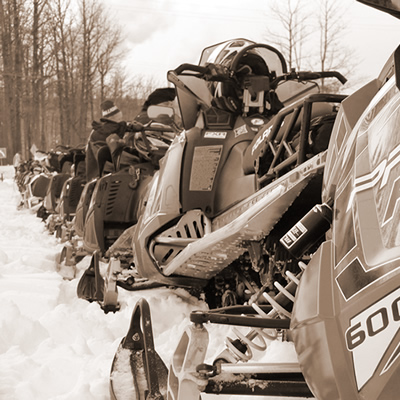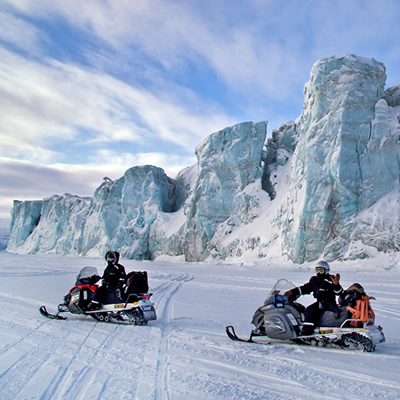With more and more recreationists taking to British Columbia’s wilderness every year—on everything from snowshoes to sleds to helicopters—increasing access also means more potential conflicts between diverse wilderness users. How can we share the backcountry and still stay neighbours? Here are several models of successful co-operation.
An early example
Brenda Drury, now retired, is half of the husband and wife team who founded Selkirk Snowcat Skiing in 1975, and with it, the catskiing industry. The business is run out of Meadow Creek in the West Kootenay and includes a commercial tenure for the operation.
“For a number of years, we only had snowcat trails into the subalpine and we saw very few other users on the terrain,” said Drury. “Once we built the lodge in the ‘80s and more access trails into the backcountry, we began to have a number of close calls between our snowcats and snowmobiles.”
By the late ‘80s, the issue required action. “We saw that our best way forward was to work things out with other backcountry users, so we held meetings and came up with a gentleman's agreement,” Drury said.
This agreement benefits both user groups. Snowmobilers can sled in the Back Meadows, a popular sledding area, but not beyond the meadows, where skiers have it to themselves.
During the winter, Selkirk Snowcat maintains the forest service road to the Back Meadows and stocks the warm-up cabin with firewood.
“We created clear signage marking our ski boundary and where it was safe to snowmobile,” said Drury.
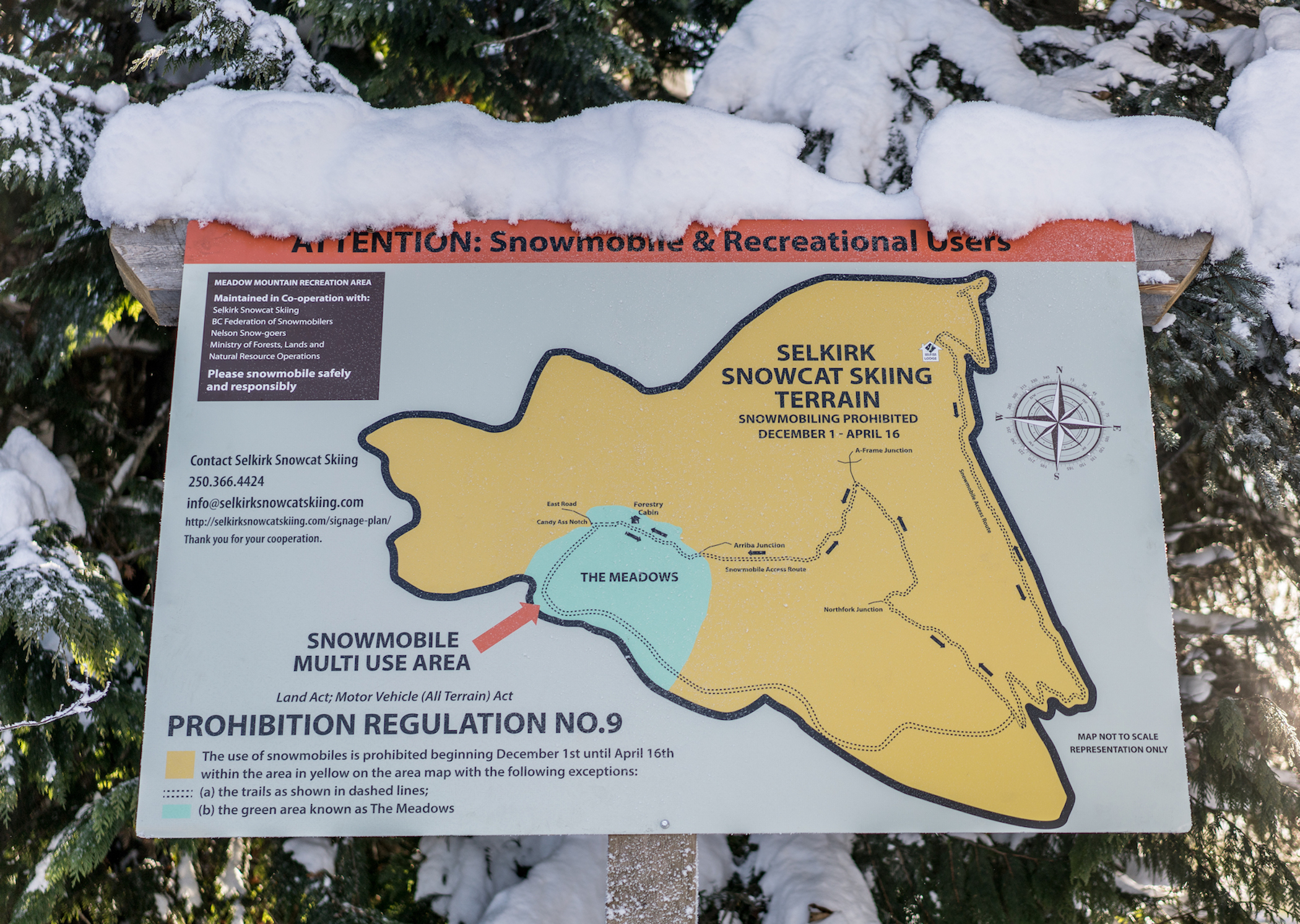
Over time, however, the spirit of the original gentleman's agreement was lost, and a provincial law (Prohibition No. 9) was passed that prohibits snowmobiling outside the Back Meadows between December 1 and April 16 each year but still maintains the popular sledding terrain of the meadows.
Ian Tomm, executive director of HeliCat Canada, explained that Selkirk Snowcat’s protected situation is unique. Land closures to snowmobiling can be avoided if everyone plays nicely.
A sledder’s perspective
Doug Brackett, president of the Nelson Snogoers sees his role as an advocate for responsible backcountry use by all users.
“As someone who not only loves to snowmobile, but also accesses the backcountry on foot and mountain bike, I understand that a quiet day snowshoeing can be made less enjoyable by loud sleds nearby,” Brackett said. “I also see that as sleds become more powerful, we can access terrain both deeper and higher in the backcountry.”
It’s true. From the introduction of fuel-injection in the early ‘90s to four-stroke engines 10 years later, sled technology advances have made deeper backcountry access much easier.
“It’s more people going farther,” he said. “Today’s sleds have better power, traction and manoeuvrability. And with more people getting involved every year, we also need better models for co-operation.”
In Valemount, another model of co-operation took the form of a recreation management plan and a non-profit organization, which was created and funded by trail access fees. The Valemount and Area Recreation Development Association is the non-profit association, consisting of a range of local businesses and backcountry users. Key goals are focused on community and public education to help backcountry use and improve the backcountry experience for all user groups.
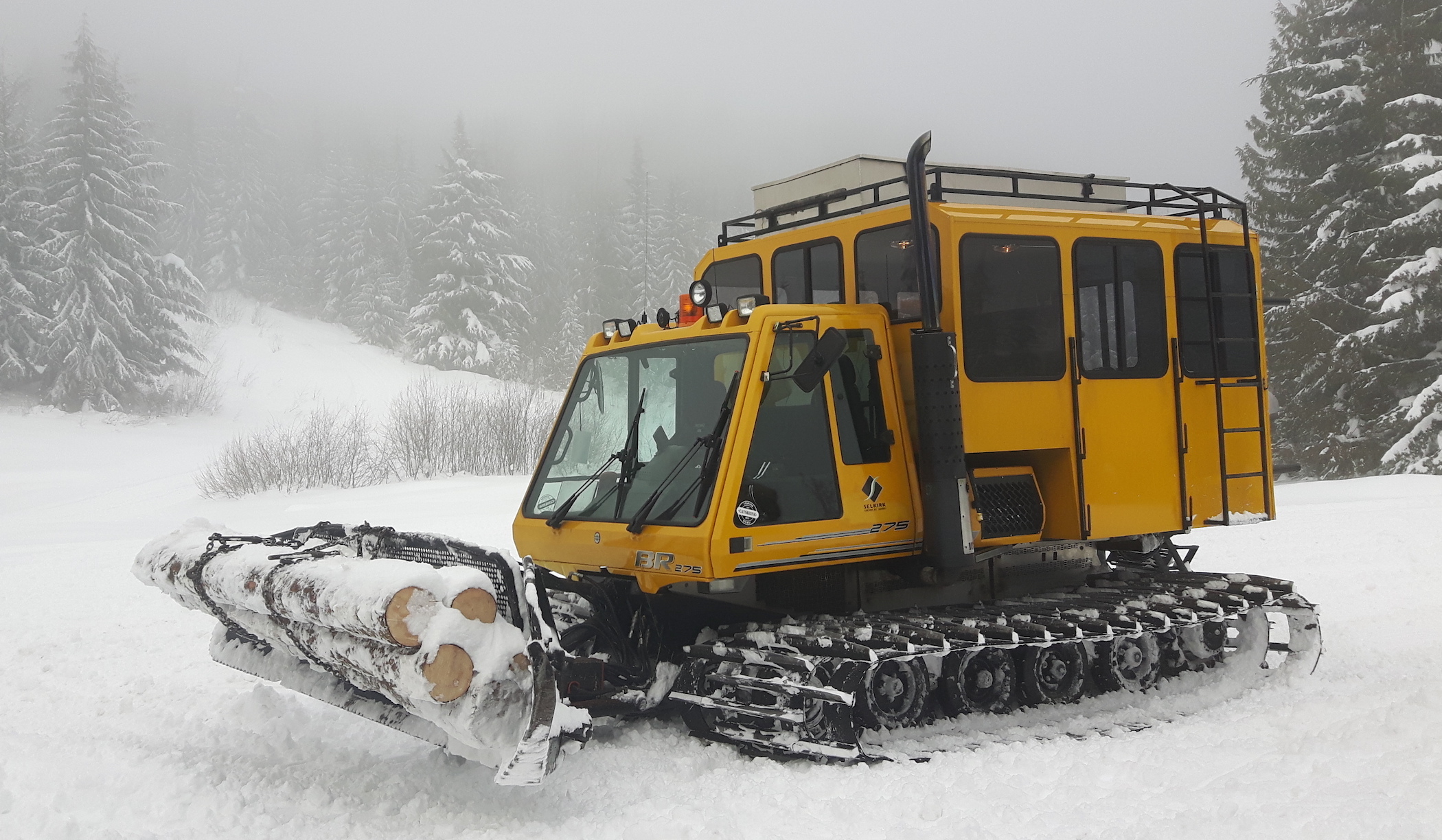
The right way to move forward
From his province-wide vantage point, Tomm adds his voice to the chorus saying that local engagement and good communication are key to any successful model for backcountry sharing.
Tomm cited another example. “They were having some challenges in the Golden area, so government stepped in and got together the various user groups and created a best practices document, and eventually an MOU (memorandum of understanding) between the British Columbia Snowmobile Federation and commercial users. It set out five main best practices” (see sidebar).
Whatever the remaining issues, it’s heartening to see all sides agree: by engaging with other stakeholders and creating relationships that promote mutual respect, less conflict and more enjoyment are available to all backcountry users.
